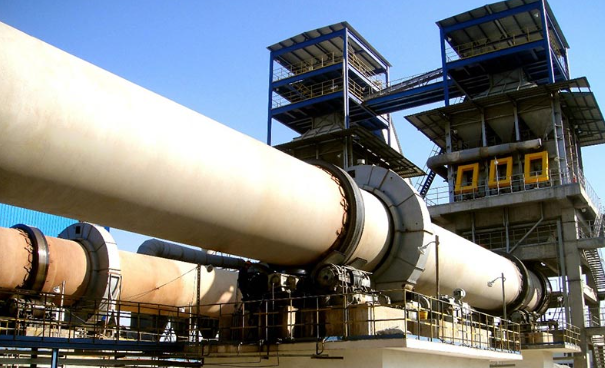
Cement rotary kiln belongs to the category of building materials equipment and is a type of lime kiln. According to the different materials processed, rotary kilns can be divided into cement rotary kiln, metallurgical chemical rotary kiln and lime rotary kiln. Cement rotary kiln is the main equipment of cement clinker dry process and wet process production line.
The working principle of cement kiln is to treat raw materials by high temperature heat to petrify and form clinker, and finally cool and process it into cement products. Cement kiln usually adopts the form of rotary kiln, with one end high and the other end low, high end feeding, low end discharging and feeding coal. Cement kiln operates slowly with heavy load alternating under high temperature. The maintenance of its accessory equipment and the level of thermal system control are related to the operation safety and efficiency of rotary kiln.
- Red kiln brick falling: Red kiln brick falling is one of the common faults of cement rotary kiln. The main reasons include poor hanging of rotary kiln skin, overheating deformation of cylinder, uneven inner wall, poor quality of kiln lining or failure to replace on schedule after grinding, non-straight center line of cylinder, and serious wear of wheel belt and pad.
- Broken shaft of supporting wheel: The main reasons for broken shaft of supporting wheel are unreasonable matching between supporting wheel and shaft, fatigue fracture, manufacturing defects, temperature stress or improper force, etc.
- Blocking of preheater: Blocking of preheater is a common process failure of new dry kiln. The main reasons include improper operation, poor coal quality, high temperature of preheater system, crusting or deformation of flap valve, etc.
- Flying sand: Flying sand is a large amount of fine particles of flying clinker formed in the burning zone of rotary kiln. The main reasons are high KH and SM of clinker, improper operation and high content of alumina and alkali in raw materials.
Kiln leakage: The molecular structure of cement kiln bricks changes due to high temperature, and then cracks appear due to thermal expansion, resulting in raw material leakage.
- Brick wear: In cement production, the increase of dust content in air flow will cause wear of kiln bricks, which will affect the product quality of cement production.
- Brick dust accumulation: High temperature causes dust accumulation on the surface of kiln bricks, which affects thermal conductivity and reduces production efficiency.
- Kiln brick corrosion: Since cement raw materials are alkaline, weak alkaline molecules in the raw materials will accelerate ionization in high temperature environments, resulting in serious corrosion of kiln bricks.
The application of infrared thermal imaging in cement kilns has the following benefits:
- Intuitive presentation of temperature distribution and visualization of fault points: Infrared thermal imaging can automatically capture the highest temperature point of the full screen or region. Through infrared thermal images, the fault point is clear at a glance, and engineers can quickly find solutions.
- Long-distance, non-contact temperature measurement: Infrared thermal imaging can measure temperature without contact with the target object, and will not affect the surface temperature of the measured object. The temperature measurement is more accurate and convenient and flexible, especially suitable for scenes where it is inconvenient to install equipment.
- Support alarm function: Infrared thermal imaging can set high and low temperature ranges. When the temperature reaches the set range, it will trigger an alarm to prompt the staff to conduct further inspection or repair the equipment to ensure production safety.
- Support secondary development: Infrared thermal imaging provides a secondary development package SDK to support users for secondary development, help customers form independent advantages, and has a variety of alarm information push methods to support equipment linkage and development.
- Real-time monitoring of kiln lining conditions: Infrared thermal imagers can monitor the kiln lining temperature field of cement rotary kilns in real time, understand the degree of lining damage under the operation of the device, provide reference for formulating maintenance plans, and avoid production stoppage accidents caused by kiln lining damage.
- Improve production efficiency and safety: By real-time monitoring of kiln wall temperature distribution and change trends, infrared thermal imaging can sense the phenomenon of refractory material shedding and thinning in advance and accurately locate it, guide combustion adjustment and shutdown maintenance, and improve production efficiency and safety.
- Reduce energy consumption and pollution: Determine the combustion situation in the furnace according to the temperature, reasonably improve the production process, improve production efficiency, and reduce energy consumption and pollution.


